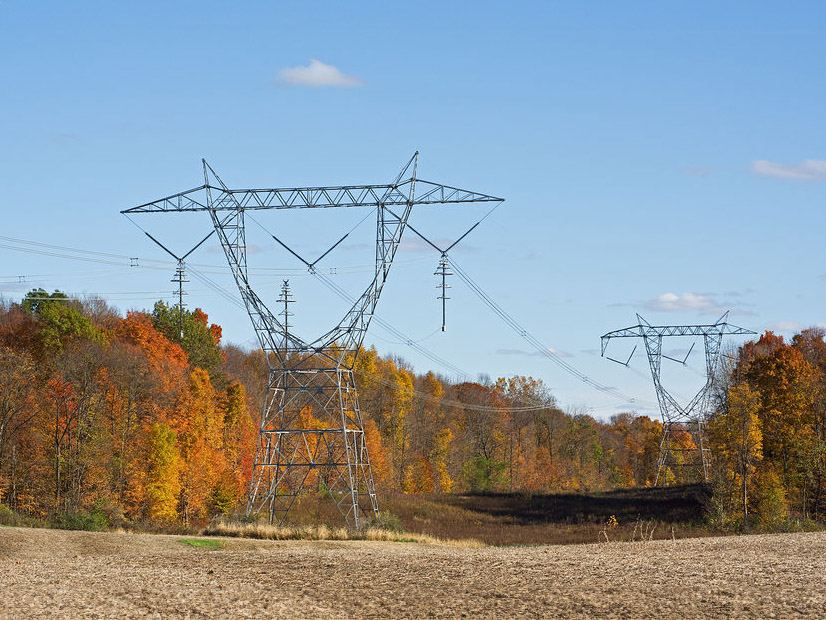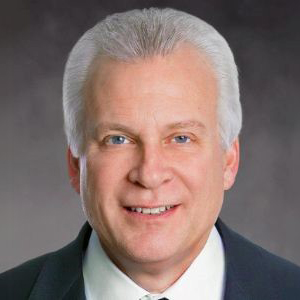Newly minted American Electric Power CEO Bill Fehrman held his first earnings call with financial analysts Nov. 6, promising to “embrace large load opportunities,” use expertise in 765-kV transmission and deliver more positive regulatory outcomes.
“I’m honored to join a leader like AEP at a pivotal time for both the organization and our industry,” Fehrman said during the call. “I need to establish a record of delivering on promises to you while demonstrating goodwill to our regulators and customers.”
Since replacing Julie Sloat as CEO in August, Fehrman said he has met with staff and stakeholders — including four governors and more than 30 regulators and legislators — across AEP’s 11-state footprint for “robust” discussions about critical initiatives. (See AEP Selects Industry Veteran as Next CEO.)
He said those exchanges have helped shape AEP’s vision for the future.
“AEP has built a strong foundation for growth,” Fehrman said, alluding to a transmission system that represents 55% of the company’s total revenue stream. “However, we can improve reliability, streamline costs, use technology better and put power in the hands of local leaders to build financially strong utilities in our communities.”
That will include what he called an “optimization exercise” as the company “retools personnel and processes” over the coming months.
“The bottom line here is we have made progress transforming a business over the past three months, but we have significantly more wood to chop,” Fehrman said.
Still, AEP has increased its five-year capital plan to $54 billion, all allocated to its regulated businesses for reliability purposes and to meet demand growth. It has allocated 63% of that capital to wires functions and 26% to new generation, including renewables. The company said it expects rates to go up less than 3% annually through 2029.
The Columbus, Ohio-based company is part of a joint venture with FirstEnergy and Dominion Energy that is pursuing several multistate extra-high-voltage transmission projects in PJM. AEP is also eyeing potential 765-kV projects in ERCOT, PJM and SPP.
“We have a big opportunity in ERCOT around 765[-kV] down there in the event that they decide to go that way. … [There is] a significant opportunity on the various backbone growth areas for Texas that just alone is a good $4 [billion] or $5 billion of opportunity potential on the 765[-kV] front,” Fehrman said. “The fact that AEP is essentially the only U.S. company that knows how to build and operate 765[-kV] gives us a strong competitive advantage.”
AEP also recently filed a settlement agreement with the Public Utilities Commission of Ohio to help insulate customers from the cost risk of building infrastructure to connect data centers. It has filed similar large-load modifications in three other states and a complaint with FERC related to co-located load arrangements. (See AEP Ohio Proposes Revised Data Center Tariff.)
“Load growth from data center demand has the potential to benefit all stakeholders, including investors, customers and local communities, but only with fair and proper cost allocation,” Fehrman said. “We don’t have an issue with data centers looking to use nuclear power plants as an energy source. But we do have an issue when they use the transmission system and try not to pay for it. That’s a problem for us because that cost gets shifted to other customers.”
Fehrman did not comment on AEP’s discussions with the U.S. Securities and Exchange Commission over the Ohio nuclear bribery scandal, in which FirstEnergy was found to have paid state legislators to subsidize its plants. The SEC has twice subpoenaed AEP since 2021, but the company and its officials have not been criminally charged. Although the company has steadfastly said it does not believe it was involved in any “wrongful conduct,” it has set aside $19 million as a contingency. (See Feds: FE Paid $61M in Bribes to Win Nuke Subsidy.)
AEP reported third-quarter earnings of $959.6 million ($1.80/share). That was a slight improvement from the same period a year ago, when earnings came in at $953.7 million ($1.83/share).
The company’s share price fell to $96.25 on Nov. 6 on a down day for the S&P 500 Utilities index, dropping just over 4% from its $100.40 close Nov. 5. AEP’s stock rebounded slightly Nov. 7 and closed up 8 cents.





